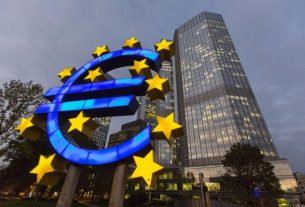Today, the Commission presents an Action Plan on Critical Raw Materials, the 2020 List of Critical Raw Materials and a foresight study on critical raw materials for strategic technologies and sectors from the 2030 and 2050 perspectives. The Action Plan looks at the current and future challenges and proposes actions to reduce Europe’s dependency on third countries, diversifying supply from both primary and secondary sources and improving resource efficiency and circularity while promoting responsible sourcing worldwide. The actions will foster our transition towards a green and digital economy, and at the same time, bolster Europe’s resilience and open strategic autonomy in key technologies needed for such transition. The List of Critical Raw Materials has been updated to reflect the changed economic importance and supply challenges based on their industrial application. It contains 30 critical raw materials. Lithium, which is essential for a shift to e-mobility, has been added to the list for the first time.
Maroš Šefčovič, Vice-President for Interinstitutional Relations and Foresight said:
” A secure and sustainable supply of raw materials is a prerequisite for a resilient economy. For e-car batteries and energy storage alone, Europe will for instance need up to 18 times more lithium by 2030 and up to 60 times more by 2050. As our foresight shows, we cannot allow to replace current reliance on fossil fuels with dependency on critical raw materials. This has been magnified by the coronavirus disruptions in our strategic value chains. We will therefore build a strong alliance to collectively shift from high dependency to diversified, sustainable and socially-responsible sourcing, circularity and innovation“.
Thierry Breton, Commissioner for Internal Market said: “A number of raw materials are essential for Europe to lead the green and digital transition and remain the world’s first industrial continent. We cannot afford to rely entirely on third countries – for some rare earths even on just one country. By diversifying the supply from third countries and developing the EU’s own capacity for extraction, processing, recycling, refining and separation of rare earths, we can become more resilient and sustainable. Implementing the actions that we propose today will require a concerted effort by industry, civil society, regions and Member States. We encourage the latter to include investments into critical raw materials into their national recovery plans.”
The Action Plan on Critical Raw Materials is aimed to:
- develop resilient value chains for EU industrial ecosystems;
- reduce dependency on primary critical raw materials through circular use of re-sources, sustainable products and innovation;
- strengthen domestic sourcing of raw materials in the EU;
- diversify sourcing from third countries and remove distortions to international trade, fully respecting the EU’s international obligations.
To achieve these objectives, today’s Communication outlines ten concrete actions. First, the Commission will in the coming weeks establish a European Raw Materials Alliance. By bringing together all relevant stakeholders, the alliance will primarily focus on the most pressing needs, namely to increase EU resilience in the rare earth and magnet value chains, as this is vital to most of EU industrial ecosystems, such as renewable energy, defence and space. Later, the alliance could expand to address other critical raw material and base metal needs over time.
To make better use of domestic resources, the Commission will work with Member States and regions to identify mining and processing projects in the EU that can be operational by 2025. A special focus will be on coal-mining regions and other regions in transition, with special attention to expertise and skills relevant for mining, extraction and processing of raw materials.
The Commission will promote the use of its earth-observation programme Copernicus to improve resource exploration, operations and post-closure environmental management. At the same time, Horizon Europe will support research and innovation, especially on new mining and processing technologies, substitution and recycling.
In line with the European Green Deal, other actions will address the circularity and sustainability of the raw materials value chain. The Commission will therefore develop sustainable financing criteria for the mining and extractive sectors by the end of 2021. It will also map the potential of secondary critical raw materials from EU stocks and wastes to identify viable recovery projects by 2022.
The Commission will develop strategic international partnerships to secure the supply of critical raw materials not found in Europe. Pilot partnerships with Canada, interested countries in Africa and the EU’s neighbourhood will start as of 2021. In these and other fora of international cooperation, the Commission will promote sustainable and responsible mining practices and transparency.
Background
The secure supply of raw materials for the EU’s industry is a long-standing issue. The EU has sought ways to address it, from the establishment of the Raw Materials Supply Group in the 1970s to the launch of the Raw Materials Initiative in 2008. This initiative set out a strategy for reducing dependencies for non-energy raw materials for industrial value chains and societal well-being by diversifying sources of primary raw materials from third countries, strengthening domestic sourcing and supporting the supply of secondary raw materials through resource efficiency and circularity.
The European Green Deal and the new EU Industrial Strategy acknowledge that access to resources is a strategic security question for making the green and digital transformations a success. Currently, the coronavirus crisis is leading many parts of the world to look critically at how they organise their supply chains, especially where public safety or strategic sectors are concerned. The Commission’s proposed recovery plan puts an emphasis on building back greener, more digital and more resilient. Therefore, Europe should strive to develop open strategic autonomy and diversify raw materials supply.
More information
- Critical Raw Materials Resilience: Charting a Path towards greater Security and Sustainability
- Critical materials for strategic technologies and sectors in the EU – A foresight study
- Questions and Answers on the Communication on Critical Raw Materials
- Factsheet on the Action Plan on Critical Raw Materials
- European Green Deal
- European Industrial Strategy
- DG GROW’s Critical raw materials webpage
- JRC’s Raw Materials Information System website
ec.europa.eu
pixabay


















